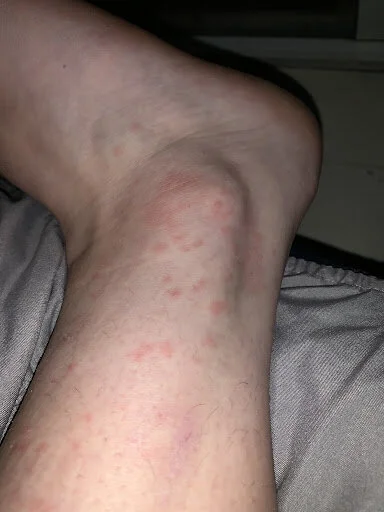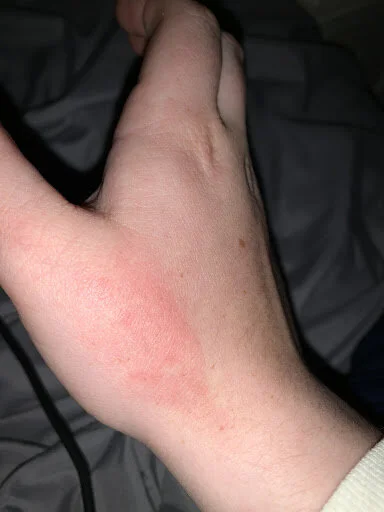Inside OU’s Quarantine Dorms: Disappointing food, mysterious rashes
Editor’s note: This story has been updated to reflect further comment from Ohio University regarding students’ claims.
When Mitchell Mollison, an Ohio University freshman, woke up one morning in early September, his sense of taste and smell was gone. He knew he had COVID-19.
“Sure enough, I was positive. Then they told me that I had to fill out this COVID crisis form online and that’s what I did. Then I was supposed to wait for a call,” Mollison said.
But Ohio University’s COVID services did not call him back. Mollison waited until the end of the day before he called them to ask what he should do. COVID services told him he would be moving to Dougan House in the back of South Green.
Martha Newman, also a freshman, tested positive for COVID after Labor Day. Newman tried to contact COVID services but did not get a response until the next day. She too would be moving into Dougan House.
When Mollison first arrived, he was struck by how hot and musty the building was, which persisted throughout his stay.
“I was kinda getting better, I still had fatigue, I still had a cough. And I feel like one of the main reasons I didn’t recover fast enough was because of the air quality in those halls. It was musty, it was old, it was hot, it was unpleasant,” Mollison said.
Newman, who moved in a few days after Mollison, described her stay there as “awful” and called the dorms “gross.”
Mollison and Newman both thought the air conditioning units were moldy, and no one cleaned Newman’s bathroom while she was there.
Both chose to order Doordash instead of eating the university-provided meals that piled up in the lobby of the building, unclaimed by students turned off by the food.
“It was not edible. It almost seemed like they cut the skin off of a pig, slapped it in a to-go container and handed it to you. The meat was disgusting, the extra food they provided was disgusting,” Mollison said.
Newman received two pieces of mystery meat and half-cooked potatoes and carrots for her second meal there. She gave up on the university’s food for the remainder of her stay.
Ohio U spokesperson Carly Leatherwood said the university was committed to providing housing and meals for students in isolation when asked about Newman and Mollison’s concerns.
“Should a student residing on campus encounter any concerns with their housing accommodations or meal options, we encourage them to reach out directly to the service provider. We take pride and are confident in a responsive team that is effective at evaluating and remediating concerns appropriately,” Leatherwood said.
One morning, during her stay in isolation, Newman woke up with itchy bug bites on her legs and her feet. The bites made their way up her legs and onto her arms.
The next day, multiple other students in Dougan woke up with the same mysterious bites that were thought to be from bed bugs, Newman said.
“People were getting bed bugs. Luckily I didn’t, but people were literally getting bed bugs from sleeping on these mattresses and everything like that,” Mollison said.
The university checked the rooms for bed bugs but did not find any, Leatherwood said. Instead, Leatherwood suggested that the students’ rashes were “COVID rash,” a less common symptom of COVID-19.
Newman and Mollison also felt that the university did not communicate with them well or check up on them. On his first night there, one of Mollison’s friends in isolation had to go to the hospital for her COVID symptoms. There wasn’t anyone from the university there that could help her get to the hospital.
“I had to be the one to walk her out to the ambulance when the EMS came,” Mollison said. “No one really had any services, she had to get a ride from someone else back after she spent like five hours in the hospital when she came back to the quarantine dorms.”
The university did not comment on Mollison’s friend who had to be hospitalized.
“The school never exactly checked up on her and it was kind of upsetting,” Mollison said.


